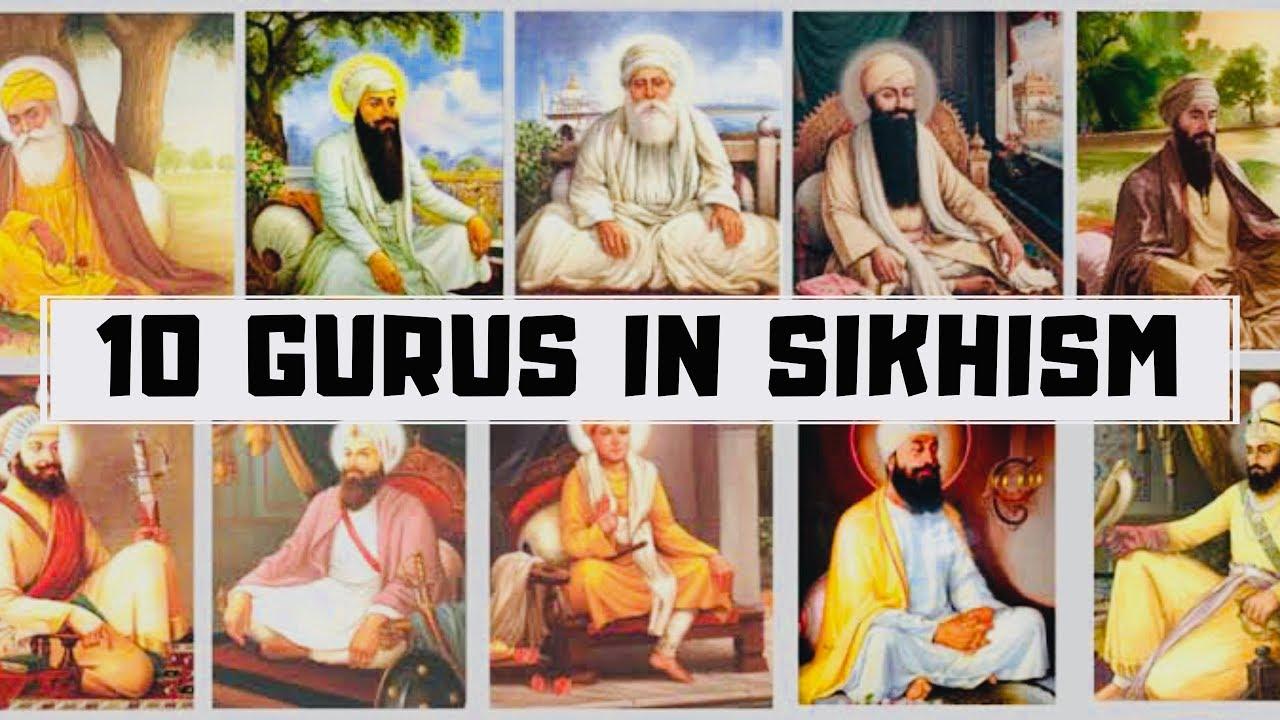Sikh Gurus and Achievements: – Sikhism is derived from Sikh, ‘Sikh’ is a Sanskrit word that means ‘disciple’. The era of Sikhism started in 1469, through the birth of Guru Nanak Dev in 1469, and ended in human form with the death of Guru Govind Singh in 1708.
Sikhism, or Sikhi, is a religion that began at the end of the 15th century CE in the Punjab region of the Indian subcontinent. With around 25–30 million Sikhs as of the early twenty-first century, Sikhism is one of the most recent major religions and the world’s fifth-largest organised religion.
TRICK To Remember Sikh Gurus Name and Order
Nanak Angdan kr Amar ho Ram ke pass chale gaye lekin Arjun ne Govind ki Rai li or kitni baduri se Kudh Govind ban gaye.
- Guru Nanak (1469 – 1538)
- Guru Angad (1538 – 1552)
- Guru Amardas (1552 – 1574)
- Guru Ramdas (1574 – 1581)
- Guru Arjundev (1581 – 1606)
- Guru Hargovind (1606 – 1645)
- Guru Har Rai (1645 – 1661)
- Guru Har Kishan (1661 – 1664)
- Guru Teg Bahadur (1664 – 1675)
- Guru Govind Singh (1675 – 1708)

Sikh Gurus and Achievements
1. Guru Nanak Dev – गुरु नानक देव (1469 – 1539)
- He was the first of all the gurus of Sikh, he founded the Sikh religion, introducing the concept of one God
- He started the Guru Ka Langar. As per the Sikh religion, langar is a term that refers to a common kitchen/ community kitchen where food is served to everyone for free without any discrimination of caste, religion, color, gender, and class
- He was a contemporary of Babur (Mughal Emperor)
- He put emphasis on the equality of women and rejected the path of renunciation
- His teachings are composed in Adi Granth or Granth Sahib.
2. Guru Angad – गुरु अंगद (1538 – 1552)
- He was the second of all Gurus
- Invented a new script called Guru-Mukhi viz. written form of Punjabi script
- Played an instrumental role in the popularization and expansion of the system of Guru ka Langar
3. Guru Amardas गुरु अमरदास (1552 – 1574)
- He introduced the Anand Karaj Marriage ceremony for Sikhs, which was done to replace the Hindu form
- Strengthened Guru ka Langar tradition
- Established the Piri and Maji systems of religious mission for women and men, respectively
- Abolished the custom of Sati and Purdah system among the Sikhs
- He was a contemporary of Akbar (Mughal Emperor)
4. Guru Ramdas गुरु रामदास (1574 – 1581)
- He was the fourth Guru of all Gurus
- Founded Amritsar in 1577 on the land granted by Akbar
- Started the construction of Golden Temple/ Swarna Mandir at Amritsar
- He requested Mian Mir (Muslim Sufi) to lay the cornerstone of Harmandir Sahib
5. Guru Arjun Dev गुरु अर्जुन देव (1581 – 1606)
- Composed Adi Granth in 1604. Adi Granth is a scripture of Sikhs
- Completed the construction of the Golden Temple/ Sri Darbar Sahib
- Founded the town of Tarn Taran Sahib which is Goindwal Sahib
- Executed by Jahangir on charges of helping prince Khusrau with money and prayer
- He was acclaimed as Shaheedan-de-Sartaj (The crown of martyrs)
6. Guru Hargovind – गुरु हरगोविंद (1606 – 1645)
- Son of Guru Arjan Dev
- Transformed the Sikh into a military community. He was known as ‘Soldier Saint’
- He wages wars against Jahangir and Shah Jahan (Mughal Emperors)
- Established Akal Takht and fortified Amritsar
7. Guru Har Rai गुरु हर राय (1645 – 1661)
- He avoided any conflict with Aurangzeb (Mughal Emperor) and devoted most of his efforts on missionary work
- Though he was a man of peace, however, he never disbanded the armed Sikh warriors
- He gave shelter to Shah Jahan eldest son, Dara Shikoh, who was later tormented by Aurangzeb
8. Guru Har Kishan गुरु हर किशन (1661 – 1664)
- He was the youngest of all Sikh Gurus. He was given the title of Guru at the age of five
- He was summoned to Delhi by Aurangzeb under framed charges of anti-Islamic blasphemy
9. Guru Teg Bahadur – गुरु तेग बहादुर (1664 – 1675)
- He established the town of Anandpur
- He was executed in Delhi by Aurangazeb for not embracing Islam.
- He called himself “Sachcha Badshah”
10. Guru Govind Singh – गुरु गोबिंद सिंह (1675 – 1708)
- He was son of Guru Tegh Bahadur. He became Guru after the martyrdom of his father
- He founded a warrior community known as Khalsa in 1699. Under Khalsa, he changed Sikhs into a saint-soldier for protecting themselves
- Introduced a new rite “Pahul”
- He made his headquarters at Makhowal or Anandpur. He compiled a supplementary Granth
- He joined Bahadur Shah’s camp as a noble
- He was the last Sikh Guru in human form and he passed the Guruship of Shiks to the Guru Granth Sahib

.
Follow on Youtube – Score Better
Join Us on Telegram For More Update
.
The Guru Granth Sahib
The Sikh religion’s teachings were passed down from Guru to Guru and then written down in the Guru Granth Sahib, a very rare book.
What is the Main Philosophy of Sikhism?
The Sikh religion is founded on three tenets: meditation and devotion to the Creator, truthful life, and service to humanity. On a daily basis, Sikhs should uphold the qualities of honesty, compassion, charity, humility, integrity, service, and spirituality.
Branches of Sikhism?
According to Harjot Oberoi, the primary historical sects of Sikhism are Udasi, Nirmala, Nanakpanthi, Khalsa, Sahajdhari, Namdhari Kuka, Nirankari, and Sarvaria.
